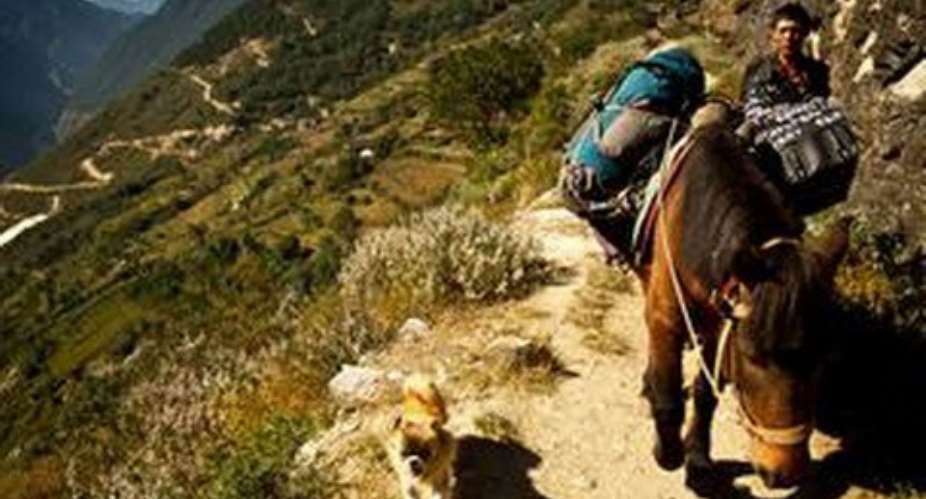Far away from the smog and crowds of China's east coast cities is Yunnan Province. Though it has a few cities of its own, the southwestern province is geographically diverse, with the Tibetan plateau rising in the north and west, and subtropical lowlands steaming to the south.
* Related article: The best national parks of Europe
Edging towards the northwest of the province is Three Parallel Rivers National Park. Here, southern Asia, eastern Asia and the Tibetan Plateau smash together in a dramatic riot of deep, near-sunless gorges, mighty rivers and craggy snow-capped peaks. The spectacular terrain has historically meant tough travel, and the subsequent isolation experienced by its inhabitants has preserved its cultural diversity. The park is home to the Naxi people, as well as the Li, Nisu and a handful of others.
The park encompasses the near-meeting points of three of Asia's – and the world's — great rivers: the Jinsha, Lancang and Nu, which eventually become the Yangtze, Mekong and Salween respectively. Although the mouths and headwaters of these rivers are all quite distant, for a brief period they gravitate towards each other and then run parallel for roughly 100 miles before diverging into different seas. Their relatively short run alongside each other happens to be in one of the most biologically diverse and geographically varied temperate zones in the world, which earned it a Unesco World Heritage Site status in 2003.
Trekking
The most well-known area of the park is Tiger Leaping Gorge, arguably the deepest gorge in the world and the site of one of China's most popular treks. The trail snakes along vertical cliffs and through small villages, while the Jinsha rushes far below. Visitors usually take two days to hike the upper path, stopping to sleep in one of the villages along the way and using Lijiang or Shangri-la as a base.
When trekking through this region, you often feel as though time is standing still. A group of small goats clang by, herded by a man carrying a walking stick. Women carry woven baskets on their backs, peddling food to travellers or carrying goods home. As the sun rises, the light filters through the jagged teeth of the mountaintops, while pure streams rush down from glaciers.
It is easy to organize your own trek through Tiger Leaping Gorge, as it is a well-travelled trail. Tour operators in Lijiang and Shangri-la can help organise more remote treks. Consider WildChina for upscale, customized trips or Yunnan Adventure for a more basic approach.
Getting there
To visit Three Parallel Rivers National Park, start in Kunming, Yunnan's capital city. From there you can fly, take a train or bus to Lijiang, another Unseco protected site. Buses and planes also run to Shangri-la, further west. From these two cities, buses and minivans depart regularly for Qiaotou, at one end of Tiger Leaping Gorge.





 We’ll no longer tolerate your empty, unwarranted attacks – TUC blasts Prof Adei
We’ll no longer tolerate your empty, unwarranted attacks – TUC blasts Prof Adei
 Bawumia donates GHc200,000 to support Madina fire victims
Bawumia donates GHc200,000 to support Madina fire victims
 IMF to disburse US$360million third tranche to Ghana without creditors MoU
IMF to disburse US$360million third tranche to Ghana without creditors MoU
 Truck owner share insights into train collision incident
Truck owner share insights into train collision incident
 Paramount chief of Bassare Traditional Area passes on
Paramount chief of Bassare Traditional Area passes on
 Two teachers in court over alleged illegal possession of BECE papers
Two teachers in court over alleged illegal possession of BECE papers
 Sunyani: Victim allegedly shot by traditional warriors appeals for justice
Sunyani: Victim allegedly shot by traditional warriors appeals for justice
 Mahama vows to scrap teacher licensure exams, review Free SHS policy
Mahama vows to scrap teacher licensure exams, review Free SHS policy
 Government will replace burnt Madina shops with a new three-story, 120-store fac...
Government will replace burnt Madina shops with a new three-story, 120-store fac...
